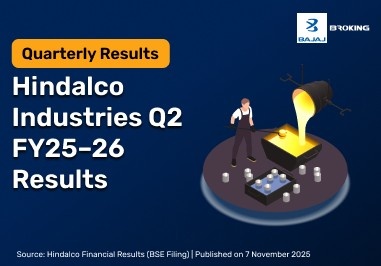Chit funds have been serving as a community financial tool for ages. In India too, chit funds are deep-rooted. From helping the needy with immediate funds to developing a habit of savings, chit funds offer multiple benefits. However, at the same time, it is also essential to be aware of frauds operating in the name of chit funds.
Unlike traditional banking, chit funds are a unique financial solution promoting both savings and borrowings. Being a popular concept, it attracts the attention of many. So, what exactly is a chit fund and how do chit funds work?
Chit funds are a method in which community members voluntarily pool money. This instils a habit of regular savings. Over time, one member receives the benefit of savings as per the requirement. This loop keeps repeating with each passing year.
The chit fund runs completely on mutual trust and cooperation. To improve transparency, the Chit Funds Act was introduced in 1982. Recently, the Chit Fund (Amendments) Bill was passed in 2019 to further safeguard both borrowers and investors.
Chit funds have been actively operating in various parts of the country and serve as a strong financial support for many communities. Read on as we explain all about chit funds in this blog.
What Is a Chit Fund?
The word “chit” refers to “transaction”. Chit funds simply refer to a financial agreement where a community of a few members agrees to participate. In this setup, each community member has to save a fixed amount of money in the collective account or pot (traditional method).
After each fixed duration, say 1 month, one member of the community receives the total saved amount. The cycle keeps repeating until each member receives the financial aid. Chit funds run on mutual agreement that the aid will go to one person at a time. Usually, the one who bids the lowest amount receives the aid. Communities may either do an auction or a lottery system to decide the beneficiary.
Traditionally, chit funds were managed by a foreman who used to be one of the participants of the community. However, with time, chit funds became more formal and now, various chit-fund companies run the business. With strict government laws, the system has become more transparent and stable over time.
Types of Chit Funds
Now that you know what a chit fund is, let’s learn about the types of chit funds. Some of the popular types of chit funds are:
Unregistered chit funds
As the name may suggest, unregistered chit funds are not managed under any official law or governing body. It may start among friends, colleagues, neighbours, or family members. People come together under a mutual agreement and understanding and start pooling a sum amount regularly. Depending on their preferred mode; auction, lottery, etc., the beneficiary receives the financial aid.
Special purpose chit funds
Chit fund communities may also save for special occasions like festivals, events like weddings, etc. In such a case, the members start saving months before the event or occasion and shortly before the purpose, the amount is withdrawn. Special purpose chit funds help people receive financial help without having to borrow from elsewhere.
Online chit funds
Modernization and digital advancements have impacted each aspect of society. Chit funds are no exception to this. With the digital rush, chit funds have also started operating digitally. In this setup, the community members meet and make decisions over the Internet instead of meeting physically. The amount is pooled and distributed digitally.
Registered chit funds
The Reserve Bank of India registers various chit-fund organisations under the Chit Funds Act 1982. So, chit funds registered under this act are known as registered chit funds. Since these are governed by the law, the scope of forgery is less and the transparency is improved. These are officially regulated so participants may be able to trust more in such groups.
Organised chit funds
Organised chit funds simply refer to the ones where participants meet regularly. It may be on a weekly or monthly basis. Usually, in organised chit funds, the name of the beneficiary is randomly drawn. The foreman writes the name of each participant on a piece of paper and randomly picks a name. The person on the paper receives the fund. Once someone receives the benefit, they cannot win again until a new cycle begins. However, they must keep contributing.
Chit Fund Example
The table below explains how a chit fund operates with 50 members:
Month
| Chit value
| Prize money
| Discount
| Organizer commission
| Dividend
| Net liability
|
1
| 50,000
| 40,000
| 10,000
| 2,500
| 152
| 847
|
2
| 50,000
| 41,000
| 9,000
| 2,500
| 132
| 868
|
3
| 50,000
| 42,000
| 8,000
| 2,500
| 112
| 888
|
49
| 50,000
| 48,000
| 2,000
| 2,500
| 10
| 9900
|
50
| 50,000
| 49,000
| 1,000
| 2,500
| 0
| 1,000
|
How Do Chit Funds Work?
As discussed above, chit funds are a mutual agreement where participants pool money together. Usually, a fixed amount of money is pooled before a monthly deadline. The group may have a foreman who manages savings and disbursement. As per the group's agreement, the beneficiary may be decided on the basis of an auction or lottery.
For instance, if a group operates monthly, the participants will meet on a fixed date and here, the beneficiary will be decided. Usually, the participant who bids at the lowest price gets the pot money. Once a member receives the fund, they cannot become a beneficiary again in the future until a new cycle begins. However, they have to keep contributing. This way, everyone is able to receive their share of benefits.
Let us understand this with the help of an example:
There is a chit fund community where 12 people participate by contributing ₹1,000 per month. At the end of each month, the community is able to pool ₹12,000. One of the participants is also the foreman of the group who receives incentives from the pooled money.
Now, suppose the group operates monthly. So, after the end of each month, there will be an auction. The person who bids the lowest gets the deal. For instance, Person A bids at ₹1,000, Person B bids at ₹500 and Person C bids at ₹1200. Since Person C has the lowest bidding, the amount will go to Person C.
So, Person C will receive ₹10,800 while the remaining ₹1200 will be distributed equally among the remaining 11 participants. The incentive of the foreman will be paid by Person C.
Key Features of Chit Funds
By now, you must have understood that chit funds are basically a financial investment pool where investors put their money over a period of time, and each member gets a chance to bid for the money in the invested pool. Although chit funds have risk factors, the profit margins are huge and unparalleled, which draws investors to these funds.
Now that you have understood the fundamentals of chit funds let’s get into the key features that you must be aware of.
A key feature of a chit fund is the bidding process, where each member of the fund gets a chance to bid on the invested money by offering smartly planned discounts to enhance their chances of winning the auction. Unlike mutual funds, where the returns depend on market fluctuations, chit funds offer returns based on the bidding process.
Secondly, you must know that pooling of resources is an integral part of chit funds. Every interested investor puts their money in a specified investment pool over a specific period of time and one member who wins the bidding gets the amount in the investment pool. In most cases, chit funds are created to pool funds for personal business needs.
Chit funds are considered short-term investments since most are held for a few months or a few years. Unlike mutual funds, investments in chit funds are mostly for immediate financial needs, but investors focus on building a sizeable corpus in the long run.
By now you must have understood that there are several risks associated with chit funds that are not limited just to the bidding process. The stability of funds depends on how efficiently every member is contributing. Therefore in any case when one of the members becomes a defaulter it can impact disability of the whole fund.
Liquidity and flexibility are possibly one of the most enticing features of chit funds. This type of fun takes care of any immediate need of the investors. However, there might be chances when the cost of liquidity is unreasonably high.
Chit funds are often considered unregularised and informal, especially in rural areas that despite making chit-funds accessible enhance the chances of fraud misrepresentation et cetera.
Lastly, you must know that the money investors get from Chit funds can be used for any purpose like paying off debts, taking care of everyday expenses, marriage et cetera.
Key Benefits of Chit Funds
Let’s take a look at the key benefits of chit funds that make this type of fund appealing to investors all across the board:
Chit funds offer immediate financial assistance for investors. Additionally, there are no restrictions on the usage of funds.
Chit funds are easily accessible and do not require a long documentation and verification process.
Chit funds are reliable for those who want to build an investment discipline without having to gauge the market 24*7.
Chit funds promote social bonding and networking since these types of funds are usually organised by people from the same area or community.
Drawbacks of Chit Funds
Just like any other type of fund chit funds also come with certain drawbacks that you must be aware of before you decide to put your money in:
The stability of chit funds depends on the investment discipline of every member of the fund. This means that if any of the members becomes a defaulter, the stability of the chit fund comes at stake.
Chit funds come with a high level of risk and yet the returns compared to a level of risk are not as promising as other funds.
In most areas funds are being organised informally which opens a window for fraud, misrepresentation et cetera leaving the investor with no legal assistance.
What are the Risks of Chit Funds?
By now you must have understood that there are several risks associated with chit funds. To give you an insight, here’s a list of risks associated with chit funds:
Chit funds are legal in India only when organised and managed as per the provisions of the Chit Funds Act, 1982. However, to make chit funds accessible, unregulated and informal chit funds are created. In such a situation, when the investor is defrauded, they are left with no legal help.
Chit funds are popular for their flexibility in offering liquidity. However, what people often overlook is the unreasonable liquidity charges under some chit funds. This means that the investor who wants to encash their investment in the fund has to pay a huge sum that brings down the value of their returns significantly.
Another is associated with chit funds is that it depends highly on the reliability and honesty of the members. Simply put, even if one of the members becomes a defaulter, the stability of the chit fund is at stake even if it is being regulated under the provisions of the Chit Funds Act 1982.
What are Chit Fund Regulations?
Chit funds in India are regulated under the Chit Funds Act of 1982. The concerned state provides express sanction and only then, a chit fund can operate. The act allows the foreman or manager of the chit fund to charge up to 7% of the total fund value.
For registered chit funds, the foreman has to pay a GST on the commission received. Currently, 18% GST is charged on the foreman’s commission as it falls under the GST law “Supply of Service”.
The foreman pays 100% of the fund value to the state registrar and can be withdrawn only after the group ends and everyone receives their share of the benefit. However, even after strict regulations, the risks in chit funds continue to prevail.
How to Invest in Chit Funds?
Becoming a member of a chit fund community is quite simple. Here is how you can do it:
Search for the most trustworthy and high-value chit fund
Request your participation. You may have to submit a few documents and fill out the form to become a member
Pay the instalments on time and actively participate in the group to reap the benefits
Make sure to step up against irregularities and seek legal assistance for the same.
Who Should Invest In Chit Funds?
Anyone willing to be a part of a community savings program can invest in chit funds. You too can invest in it if:
You can invest regularly without fail
Looking for a discipline savings habit
You are comfortable in a community setup
You are comfortable with the auction results of the group since someone else may back the funds before you do.
Key Difference b/w Mutual Funds vs Chit Funds
Mutual funds and chit funds have various differences. The regulations, risks, rewards, and features differ in both types of financial setup. The table below explains in detail:
Basis
| Chit fund
| Mutual fund
|
purpose
| Chit fund promotes both savings and borrowings
| Mutual fund promotes savings and investments
|
Government regulations
| Section 61 of the Chit Funds Act of 1982 regulates the chit fund. The state government is responsible for appointing a chit registrar
| SEBI (Securities Exchange Board of India) regulates the mutual funds in India
|
Taxation rules
| Chit funds are taxed under “Income from other sources” under the Income Tax Act of 1969
| Mutual fund taxation depends on the holding period and income tax slab of the investors
|
Return possibilities
| The returns may vary from one group to another
| The returns may vary from one mutual fund to another
|
Market volatility & risks
| Chit funds are usually not exposed to any market risk
| Mutual funds are subject to market volatility and risks
|
Considerations Before Investing in a Chit Fund
Here are a few things that you must consider before investing in a chit fund:
Make sure to verify the company or organisation before investing in it.
You must also check the credentials and authenticity of the participants
Check for the registration certificate and registration number provided by the particular state
Each group has a foreman’s commission. So, make sure to compare this cost before participating.
Conclusion
Whether it is to meet immediate or long-term needs, investments have become the go-to option for every individual.
Remember that investing in chit funds has to be done after a careful evaluation of the fund management and organisation. If you are planning to invest in chit funds, make sure to pick a fund that is organised as per the Chit Funds Act 1982 to avoid getting trapped in fraudulent funds.















